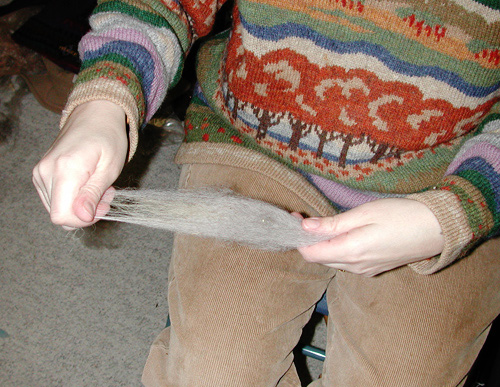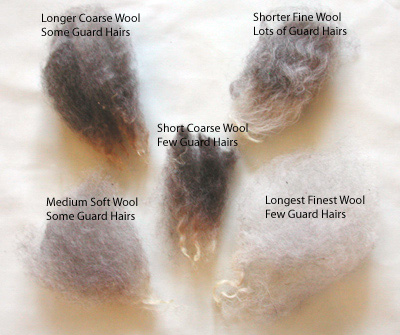|
|
|
What
an Old Report Can Teach Us
Sir John Sinclair, Laird of Orkney, and his fellows in the British wool market had a problem. By 1700, the unthinkable had happened. Britain, once famous for its wool, had lost its place to the golden fleece of Spanish merino. The Lord Chancellor still sat on the Woolstack, in the House of Lords in Parliament, but its symbolism as the source of English wealth was becoming as faded as old upholstery. Some wool growers searched for a way to import merinos to Britain, although selling black market merinos could be punishable by death. Others like Sir John Sinclair and his fellow members of the Highland Society of Scotland looked for a native British alternative. In 1789, the Highland Society assigned Sir John and his friend Dr. James Anderson to research the sheep from the Shetland Islands in the district of Orkney. In July 1790, they presented a report about what Sir John called the “kindly sheep” of the Shetland Islands and cautiously suggested that the fine wool of Shetland sheep might compete with Spanish merinos.
Today we know that Shetland sheep grow the finest wool of all British sheep breeds, although merino remains the international standard for fine wool. In the early twentieth century, knitting patterns for next-to-the-skin wear and baby clothes often called specifically for soft Shetland wool. Indeed until recent decades, merino yarn remained far more expensive than Shetland or other wools, and merino roving for hand spinners was usually unavailable. Instead, as Sir John had hoped, Shetland wool held pride of place among fine British wools. Curiously enough, over the past decade or two, Shetland wool has fallen from favor among many new hand spinners. At a fiber store where I worked, I often heard it described a “coarse” or “rough”. My own experience of commercially prepared Shetland roving varied from the silky fine, to the softly textured, to coarse. Nevertheless, the large selection of Shetland fleeces in the store begged to be stroked and cuddled. What could account for so much variation? Were the old patterns calling for Shetland wool simply ignorant of the better fiber, or was I missing something? In researching Shetland sheep and their history, I came across Sir John Sinclair and Dr. Andrew's 1790 report and began to see the light. Sir John and Dr. Andrew reported that Shetland wool “is certainly preferable to any other for stockings, and probably for all light woolen manufactures”, but noted that it required careful handling to maximize the softness of the fleece of these “kindly sheep”. Even two hundred years later, the modern spinner can learn a great deal from their recommendations on handling Shetland wool. Sorting
Your Fleece Unlike many modern sheep breeds, ancient breeds like Shetland sheep often have a lot of variation in the staple length and softness of the fleece on a single animal. Usually the finest fiber grows near the neck and shoulders and the coarsest fibers around the legs of a sheep. Commercially produced rovings frequently blend together an entire fleece, often combined with other similar fleeces. The texture of the roving, therefore, tends to be an average of the finest and coarsest fibers included. When processing a fleece by hand, you have an opportunity to separate the fine and coarser fibers. Then you can design yarns for each type of wool that will maximize either fineness or strength, softness or texture. To sort your fleece, begin by spreading it out on the floor and looking at it carefully. Some parts such as the neck and shoulders will have finer wool than others. Some areas will have longer or shorter locks. 
As you separate, make piles the different types of locks. Because there is a great deal of variation among Shetland sheep, some fleeces will have more obvious differences in staple length and fineness than others. If you purchase part of a fleece, instead of a whole one, the amount of variation within the fleece will also be limited. Still, by sorting the fleece by quality, you can make informed decisions about using each part of the fleece or about blending it later. Remember that it is usually easier to spin a consistent yarn if the lengths of all the fibers in the blend are relatively similar. A little sorting now gives more flexibility later.
Washing
your Fleece 
Once the bath is filled, I put about 8 ounces of fiber in the water, being careful not agitate the fibers and make them felt. I soak the wool for 30 to 40 minutes or until the water begins to cool. Hot water melts away the natural waxes and oils that make wool feel greasy. When the water gets cold, the grease settles back onto the fiber, so remember to change the water while it is still warm. As the water drains, I very gently squeeze out the dirty water from the wool, being careful not to wring or agitate it, and set it aside. Then I refill the sink with soap and hot water and soak the wool a second time. Usually by the end of the second soak the wool is clean. If it still looks dirty, I continue washing it in soap and water as needed. To finish the process, I draw two baths of clean, hot water and rinse the wool for 20 to 30 minutes in each.
Remove the wool from the bath, gently squeeze the water out, and set it on a drying rack to dry. Separating
the Guard Hairs For a textured, coarser yarn, you may choose to card and spin the guard hairs along with the rest of the fleece. If, however, you wish to use only the soft down, you will need to at least partially dehair the wool before spinning.
Once the lock has been flicked and the fiber loosened, it is much easier to separate the coarse hairs from the fine down. The guard hairs are usually longer than the down and stick out beyond it. I grasp the lock gently but firmly part way along the length of the down with one hand. The I grasp the ends of the hairs with the other hand and pull the hairs out of the down. I repeat the dehairing process several times until the largest and coarsest of the guard hairs have been removed. If the lock has been well loosened, the hairs should slide out fairly easily. If they stick, try flicking the lock again to loosen the fibers further. Some hair will remain in the down, but the yarn should still feel quite soft. Flicking and dehairing the fiber gives me a second chance to separate out the finest or coarsest fibers and set them aside if I wish. As I work, I think about the kinds of yarn each quality of fiber might best suit. Use
Each Part of the Fleece
for its Strengths As I examine my sorted wool, Sir John's idea to match each fiber's characteristics to an appropriate project resonates with my spinner's instincts. I started spinning in part because it gave me the chance to design yarn specifically for my intended project. I might want to wear only finest Shetland down socks, but for sturdy mittens or a cozy, long-wearing sweater, the stronger fibers of the coarser parts of my fleece are an asset.
Once your fleece is flicked, you can decide to spin each quality of fiber separately, saving the finest for delicate lace and using the coarsest for heavy yarn, or you can blend portions of each type of fiber to make a yarn with wear and handling characteristics needed for your project. Your imagination is the only limit. The
Kindly Sheep
References: Amos, Alden. The Alden Amos Big Book of Handspinning. Loveland: Interweave Press, 2001. Irwin, Bobbie. The Spinner's Companion. Loveland: Interweave Press, 2001. Smith, Beth. "Locked Up: Washing and Spinning Cormo Locks and Other Fine Fleeces," Knitty, Winter 2008.
|
| ABOUT THE AUTHOR |
|
|
|
Text + Images © 2009 Lisa D. Jacobs. Contact fibertreedesigns@yahoo.com |












